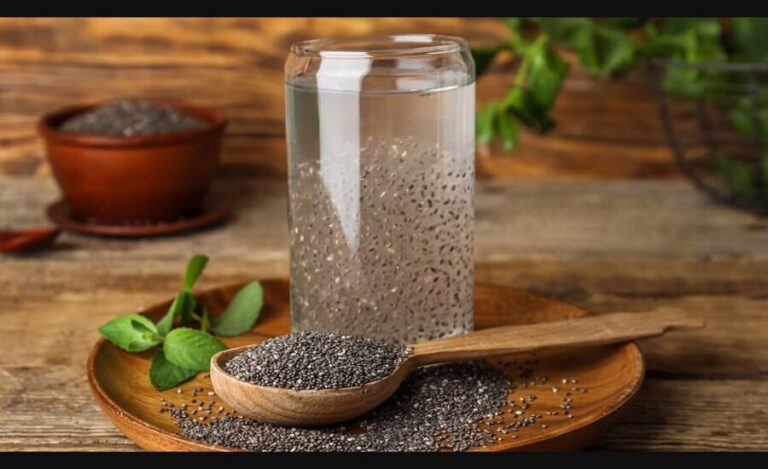Tamarind,Health benefits,Side Effects,Cancer Risk,Brain Health,role & More
Introduction
Tamarind (Tamarindus indica) is a tropical tree nearby to additives of Africa and southern Asia. Its fruit pulp is substantially completed in numerous culinary traditions in the rest of Asia, contributing a tangy taste to dishes.
In addition to its culinary uses, tamarind is ideal for its fitness and fitness advantages. It consists of compounds which could have moderate laxative houses and may help combat tremendous fungal and bacterial infections. Additionally, tamarind consists of a substance similar to mucin, this is placed in the attention and plays a feature in preserving the cornea wet and protected.
Tamarind has been traditionally used to deal with an entire lot of conditions, which incorporates dry eyes, constipation, parasitic infections, or perhaps early ejaculation. However, it’s important to be aware that there may be restrained scientific evidence to validate the ones claims. While tamarind has been valued for its medicinal properties in several cultures, more studies are needed to sincerely recognize its effectiveness for its uses.
What is tamarind?
The taste of tamarind is both candy and tangy, with its flavor diverse depending on its ripeness. As the fruit ripens, it will become sweeter, even as less ripe tamarind has an inclination to have a more sour taste.
Although local to tropical regions of Africa, tamarind wood now thrive in numerous warm climates spherical the arena, consisting of South Asia, Mexico, and components of Central America. Its unique flavor makes it a famous aspect in lots of cuisines.
Possibly Effective for
Tamarind has been studied for its ability advantages in coping with positive fitness situations. For instance, eye drops containing tamarind seed extract, either by myself or in mixture with different ingredients, might also help alleviate signs of dry eye by presenting moisture and safety to the attention’s floor.
Tamarind may additionally help with fluoride toxicity, a condition referred to as fluorosis, due to excessive fluoride consumption. When eaten up, tamarind appears to increase the excretion of fluoride through urine. However, it’s nevertheless uncertain whether or not this technique considerably alleviates the symptoms of fluorosis, and further research is needed to set up its effectiveness.
In phrases of sexual fitness, tamarind seed powder has been explored as a treatment for early orgasm (premature ejaculation), but cutting-edge evidence indicates it does not now enhance signs or pleasure all through intercourse.
While tamarind is of hobby for several different potential uses, there is inadequate dependable evidence to verify its effectiveness for maximum of those purposes. More studies are needed to fully understand its advantages.
Health benefits of tamarind
Tamarind isn’t only a flavorful fruit, but also a nutritious one. It is filled with antioxidants and is a great supply of crucial vitamins which include calcium, fiber, and magnesium. These nutritional benefits make tamarind a healthful addition to your weight loss plan, supplying a number of advantageous consequences on your ordinary well-being.
According to nutrition experts, tamarind is a nutrient-dense meal, meaning it presents a whole lot of treasured nutrients without being excessive in calories. However, like any meal, moderation is key. It’s encouraged to consume around half a cup per helping revel in its advantages without overdoing it.
Including tamarind for your food or snacks can make contributions to a balanced weight loss plan, and its rich nutrient profile supports numerous factors of health. Just be aware of portion sizes to get the maximum out of this nutritious fruit.
Cooking uses
Tamarind pulp is a staple in hundreds of cuisines inside the direction of South and Southeast Asia, Mexico, the Middle East, and the Caribbean. Not most effective is the pulp usually executed in cooking, but the seeds and leaves of the tamarind tree are also in shape for human consumption.
Side Effects
When consumed orally: Tamarind is normally taken into consideration safe whilst covered in meals in regular quantities. However, there can be restricted reliable facts about its protection while applied in large portions or for medicinal capabilities. As with any complement or herb, it’s essential to be cautious whilst consuming it in excessive doses.
When used within the eyes: Tamarind seed extract, at the same time as formulated into eye drops, is in all likelihood secure for use inside the eyes
. However, as with all eye remedies, it’s vital to check suggestions and seek advice from a healthcare expert in advance.
Full of antioxidants
Antioxidants are useful compounds found in various foods that assist shield your frame from the harmful outcomes of free radicals. Free radicals are volatile molecules which could motive oxidative strain, which can also contribute to a range of fitness issues, along with:
Autoimmune issues
Cardiovascular and inflammatory illnesses
Cataracts
Cancer
Neurodegenerative situations, which includes Alzheimer’s and Parkinson’s
Antioxidants paintings by way of neutralizing unfastened radicals, stopping them from inflicting harm to your cells. This protecting motion supports popular fitness, and tamarind is an first-rate deliver of antioxidants
Cancer Risk Reduction
Experts advocate incorporating antioxidant-wealthy foods into your weight loss program for diverse fitness blessings, including possibly lowering the threat of most cancers. Antioxidants help protect cells by means of neutralizing loose radicals that could harm DNA. Since DNA harm is usually a key trouble inside the development of many cancers, antioxidants play a critical function in reducing this danger.
Plant-primarily based components are in particular rich in phytochemicals, which possess antioxidant houses. Tamarind, for instance, is full of numerous useful phytochemicals, which include beta-carotene, which can help your generic fitness and help defend in opposition to mobile harm.
Brain Health
The B nutrients include 8 essential vitamins that play a critical role in normal health. These water-soluble vitamins aren’t saved within the body, so it is essential to eat them regularly through your weight-reduction plan. B nutrients are particularly crucial for the proper functioning of the thoughts and fearful devices.
Tamarind is a top notch supply of severa B vitamins, in particular thiamine (B1) and folate (B9), both of which might be critical for power production and cellular health. However, it is crucial to be conscious that like most plant-primarily based total food, tamarind does no longer incorporate weight loss plan B12, that is usually found in animal products. By including tamarind to your diet, you can help guide your frame’s B diet needs.
Bone Health
Magnesium is important for keeping strong bones, and those who eat accurate enough quantities of this mineral will be inclined to have better bone density compared to people who are poor. Unfortunately, many people, mainly teenagers and older adults, frequently do no longer get sufficient magnesium in their diets. Tamarind is an extraordinary supply of magnesium, making it a precious addition to your eating regimen.
In addition to magnesium, tamarind moreover includes greater calcium than many specific plant-based total ingredients. Together, those minerals, along with weight-bearing wearing occasions, can help bone health and can reduce the risk of situations like osteoporosis and bone fractures. However, to effectively soak up calcium, your body desires nutrition D. Since tamarind isn’t always an outstanding supply of food plan D, it’s vital to achieve this nutrient from specific meals or daylight hours to maximise calcium usage.
Helps reduce inflammation
Inflammation in the body can make contributions to a full-size form of fitness troubles, which include injuries, illnesses, and chronic illnesses.
Fortunately, reducing irritation can lower those risks, and a food plan performs a key function in supporting this system.
Tamarind pulp is rich in potassium and polyphenols, along with flavonoids, that are recognized for his or her anti-inflammatory residencies. Flavonoids are obviously compounds in plants that act as antioxidants, assisting to combat irritation and oxidative strain inside the frame.
While tamarind on my own may not be a remedy-inquisitive about irritation, incorporating it into your food regimen can genuinely be a useful addition to an overall wholesome life-style aimed at decreasing infection and its related risks.
May play a role in obesity therapy
Inflammation within the frame can contribute to a large style of health problems, in conjunction with accidents, ailments, and chronic illnesses. Fortunately, reducing infection can lower those dangers, and weight loss plan plays a key feature in assisting this gadget.
Tamarind pulp is rich in potassium and polyphenols, collectively with flavonoids, which can be mentioned for their anti-inflammatory homes. Flavonoids are obviously occurring compounds in vegetation that act as antioxidants, supporting to fight infection and oxidative pressure within the body.
While tamarind by myself won’t be a remedy-involved in inflammation, incorporating it into your weight loss program can clearly be a helpful addition to a typical healthy lifestyle aimed toward lowering inflammation and its associated dangers.
May be good for people with diabetes
If you have got diabetes, you’re probably aware of the glycemic index (GI), which measures how ingredients with carbohydrates affect your blood sugar stages. Foods that rating low on the GI are less likely to cause sharp increases in blood sugar, making them a higher choice for maintaining stable glucose ranges.
Tamarind is a food that has sparked interest due to its capability in handling blood sugar tiers. Although tamarind incorporates about 34 grams of sugar in keeping with half of cup, it’s far surprisingly low at the glycemic index, because of this it can no longer result in fast spikes in blood sugar. While studies continue to be ongoing to better apprehend how tamarind might match into diabetes control, its low GI should offer some blessings.
It’s important to keep in mind that even as tamarind could probably be a helpful addition to a diabetes-friendly eating regimen, extra studies are needed to verify its outcomes and effectiveness in blood sugar regulation. Always discuss with a healthcare company for personalized dietary advice.
How to try tamarind
Tamarind comes in numerous paperwork, and the proper preference relies upon how you intend to use it on your cooking or for private consumption. Here’s a better observe the one of a kind ways you may enjoy this flexible fruit:
Raw Tamarind: If you choose to consume tamarind in its natural kingdom, you can sincerely crack open the pod and experience the tangy pulp surrounding the seed. The pods themselves aren’t edible however are compostable, making them a green choice.
Homemade Tamarind Paste: Making your own tamarind paste is a tremendous way to keep the fruit’s natural taste. To do that, boil the tamarind pulp and pressure it to put off the fibers and seeds. The resulting paste is ideal to be used as a dip or to enrich the flavors of diverse dishes. According to culinary experts, the handiest component you want to add is water. This guarantees that the paste keeps all the natural nutrients of the clean tamarind.
Commercial Tamarind Forms: If you are brief on time or opt for comfort, tamarind is to be had in a variety of processed forms:
Tamarind Paste: Ready-made paste is a famous choice, but make certain to test the aspect list to avoid merchandise with introduced sugar or preservatives.
Tamarind Powder: This dry form is some other convenient option for seasoning dishes.
Tamarind Concentrate: A concentrated liquid shape that packs a punch of taste, often utilized in cooking.
Compressed Tamarind Block: A solid block of tamarind pulp, which has been compressed and stripped of seeds and pods, making it smooth to use in larger quantities.
Facts:
- Origin and Culinary Use: Tamarind is native to tropical regions of Africa and southern Asia. Its tangy, sweet, and sour pulp is widely used in culinary traditions across South Asia, Southeast Asia, Mexico, the Middle East, and the Caribbean.
Nutritional Profile: Tamarind is rich in antioxidants and provides essential nutrients such as calcium, fiber, magnesium, and B vitamins, including thiamine and folate. It is also a good source of potassium and polyphenols. - Health Benefits:
- Antioxidants: Tamarind contains compounds that protect the body from oxidative stress, which can reduce the risk of various health issues such as heart disease, cancer, and neurodegenerative diseases.
Bone Health: Tamarind provides magnesium and calcium, which are vital for maintaining strong bones and may help prevent osteoporosis. - Anti-inflammatory: Tamarind’s antioxidants, particularly flavonoids, are known for their anti-inflammatory properties, supporting overall health.
- Digestive and Eye Health: Tamarind can aid in relieving constipation and may provide relief for dry eyes due to its mucin-like substance.
Traditional Medicinal Uses: Tamarind has been used to treat a variety of health conditions, including dry eyes, constipation, parasitic infections, and even premature ejaculation. However, scientific evidence supporting these claims is limited, and more research is needed.
Safety: Tamarind is generally considered safe when consumed in moderate amounts as part of food. When used medicinally, it’s important to consult a healthcare provider, especially for eye-related applications.
- Antioxidants: Tamarind contains compounds that protect the body from oxidative stress, which can reduce the risk of various health issues such as heart disease, cancer, and neurodegenerative diseases.
- Forms: Tamarind is available in various forms, including raw pods, homemade paste, commercial tamarind paste, powder, concentrate, and compressed blocks.
- Potential for Diabetes Management: Tamarind has a low glycemic index, which may help regulate blood sugar levels, making it a good option for individuals managing diabetes. However, more research is needed.
Summary:
Tamarind is a tropical fruit that offers both culinary and potential health benefits. Its tangy pulp is used in a variety of dishes, particularly in South and Southeast Asia, Mexico, and the Caribbean. Tamarind is packed with essential nutrients such as calcium, magnesium, fiber, and antioxidants, contributing to bone health, reducing inflammation, and potentially lowering cancer risks. It also provides digestive support and may help with dry eyes due to its mucin-like properties. Although it has been traditionally used to treat various ailments, more scientific research is needed to confirm the effectiveness of tamarind in treating conditions like premature ejaculation or fluoride toxicity. Tamarind can be consumed in raw, paste, powder, concentrate, or compressed block form, making it versatile for various cooking needs.
FAQs:
1. What is tamarind?
Tamarind is a tropical fruit that comes from the tamarind tree (Tamarindus indica). It has a sweet and sour flavor and is commonly used in cooking, especially in South and Southeast Asia, the Middle East, and Latin America.
2. How does tamarind benefit health?
Tamarind is rich in antioxidants, vitamins, and minerals. It can support digestive health, reduce inflammation, promote bone health, and protect against oxidative stress. It may also help with managing blood sugar levels and support eye health.
3. What are the potential medicinal uses of tamarind?
Tamarind has been used to treat conditions like constipation, dry eyes, parasitic infections, and even premature ejaculation. However, scientific evidence for many of these claims is limited, and further research is needed to confirm its effectiveness.
4. Can tamarind help with diabetes?
Tamarind has a low glycemic index, meaning it does not cause rapid spikes in blood sugar levels. This makes it potentially beneficial for people with diabetes, though more research is required to fully understand its impact on blood sugar control.
5. How can I consume tamarind?
You can eat tamarind raw by cracking open the pod and consuming the pulp, or you can use tamarind paste, powder, concentrate, or compressed blocks in cooking. Tamarind paste is especially popular for adding tangy flavor to sauces, curries, and drinks.
6. Are there any side effects of tamarind?
Tamarind is generally safe when consumed in moderation as part of food. However, excessive consumption or using tamarind for medicinal purposes without proper guidance may cause adverse effects. Always consult with a healthcare provider for personalized advice.
7. What are the forms of tamarind available in stores?
Tamarind is available in various forms, including raw pods, homemade paste, commercially made paste, powder, concentrate, and compressed blocks of pulp.
Read More Information About FOOD At http://incrediblestreet.com/



